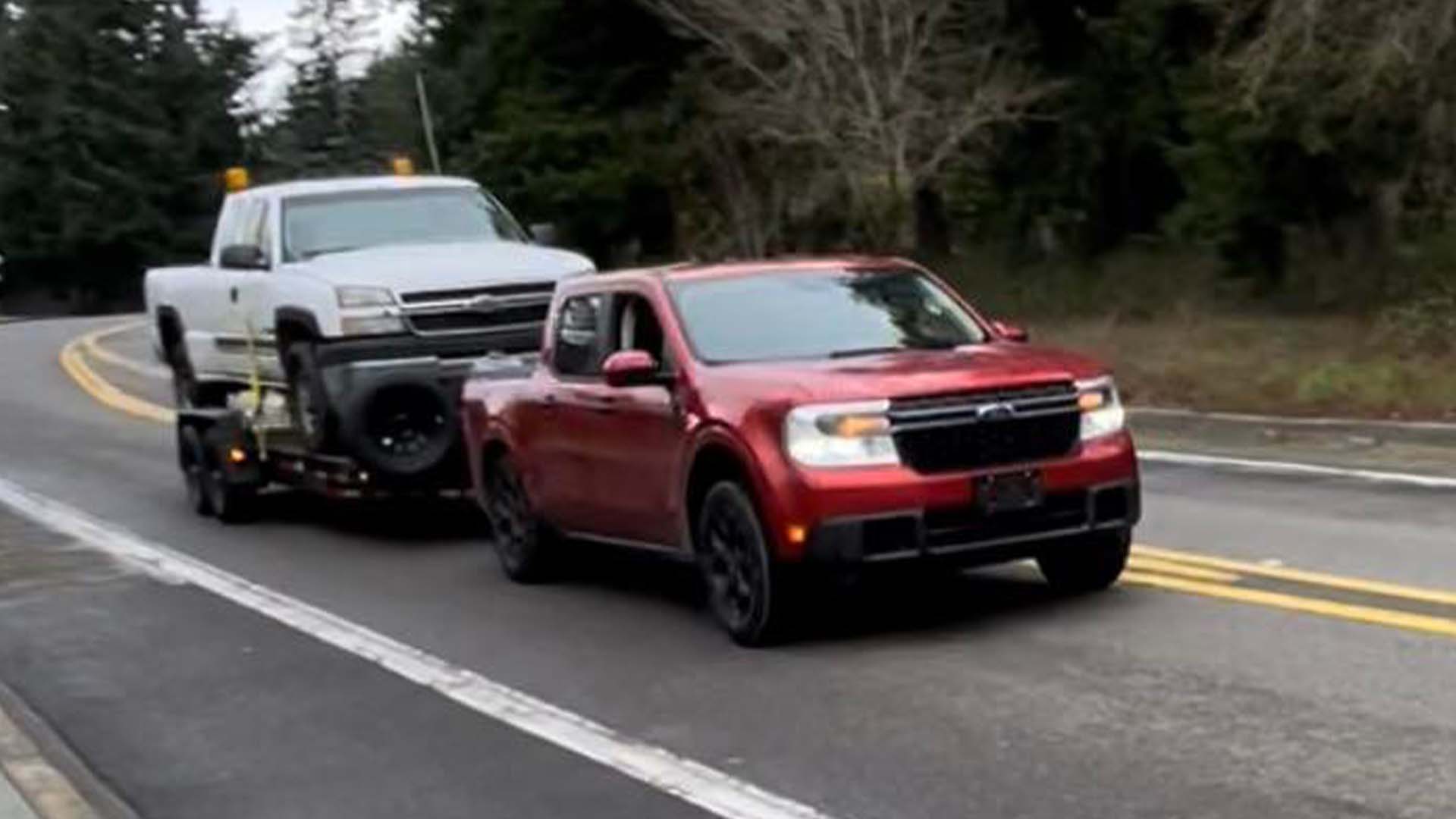

I’m not sure what it’ll take for you guys to call the Ford Maverick a serious truck, but owners keep going out of their way to make sure it happens. We’ve seen ’em with a bed full of logs, and I’ve driven a base hybrid flat-out through the hills of Tennessee with a pallet of mulch in the bed while still gaining speed. Neither of those has anything on this dude who decided to tow an extended-cab, long-bed Chevy Silverado 2500 with his Maverick and lived to tell about it.
Now’s the part where I make it very clear that I can’t condone such activities, mostly because this truck-trailer-truck combo is way overweight. It crossed the scales at roughly 12,500 pounds, of which only 3,700 was the Maverick tow vehicle. That means the trailer and the Silverado it carried accounted for approximately 8,800 pounds—more than twice the Maverick’s 4,000-pound max tow limit. Makes sense, then, that I came across it on the Overloaded Facebook group.

David Reza gave me the rundown on his admittedly sketchy towing experience, which involved pulling the Chevrolet about seven miles down gravel and asphalt roads.
“It went way better than expected,” he admitted. “Trailer brakes were locking up at like 3.5 or 4.0, so we had insanely low stopping distances.”
That’s one way to look at the bright side, though I’d rather have longer, more gradual stopping distances. Maybe that’s just me!
The Maverick he used is a 2.0-liter EcoBoost truck, meaning it makes 250 horsepower and 277 pound-feet of torque. That output gets sent to all four wheels through an eight-speed automatic. It’s equipped with the 4K Tow package, which means it has a factory trailer brake controller in the cab. And even though it’s better suited for work than the more eco-focused Maverick hybrid, it was never meant to haul a load this size.
Ford built the Maverick on its C2 architecture, which also underpins crossovers like the Escape and Bronco Sport. It can tow the most of those three vehicles and when I reviewed the truck last fall, engineers told me they showed no mercy when testing them for durability. But it’s still built on a car platform.

Now, the overloaded Maverick wasn’t going interstate speeds with this trailer attached, but Reza reckons he hit 55 miles per hour on the longest straight stretch. Most of the drive took place in light traffic on town roads, so there was no need to go any faster than that.
Reza told me that was the only trailer he ever towed with the Maverick because he traded it in about a month later. You can guess for yourself if he disclosed this adventure to the dealer, but just know he decided to step up to a 2022 Ford F-150 with the 2.7-liter EcoBoost in case he’s ever gotta do this kind of job again.
Got a tip or question for the author? Contact them directly: caleb@thedrive.com